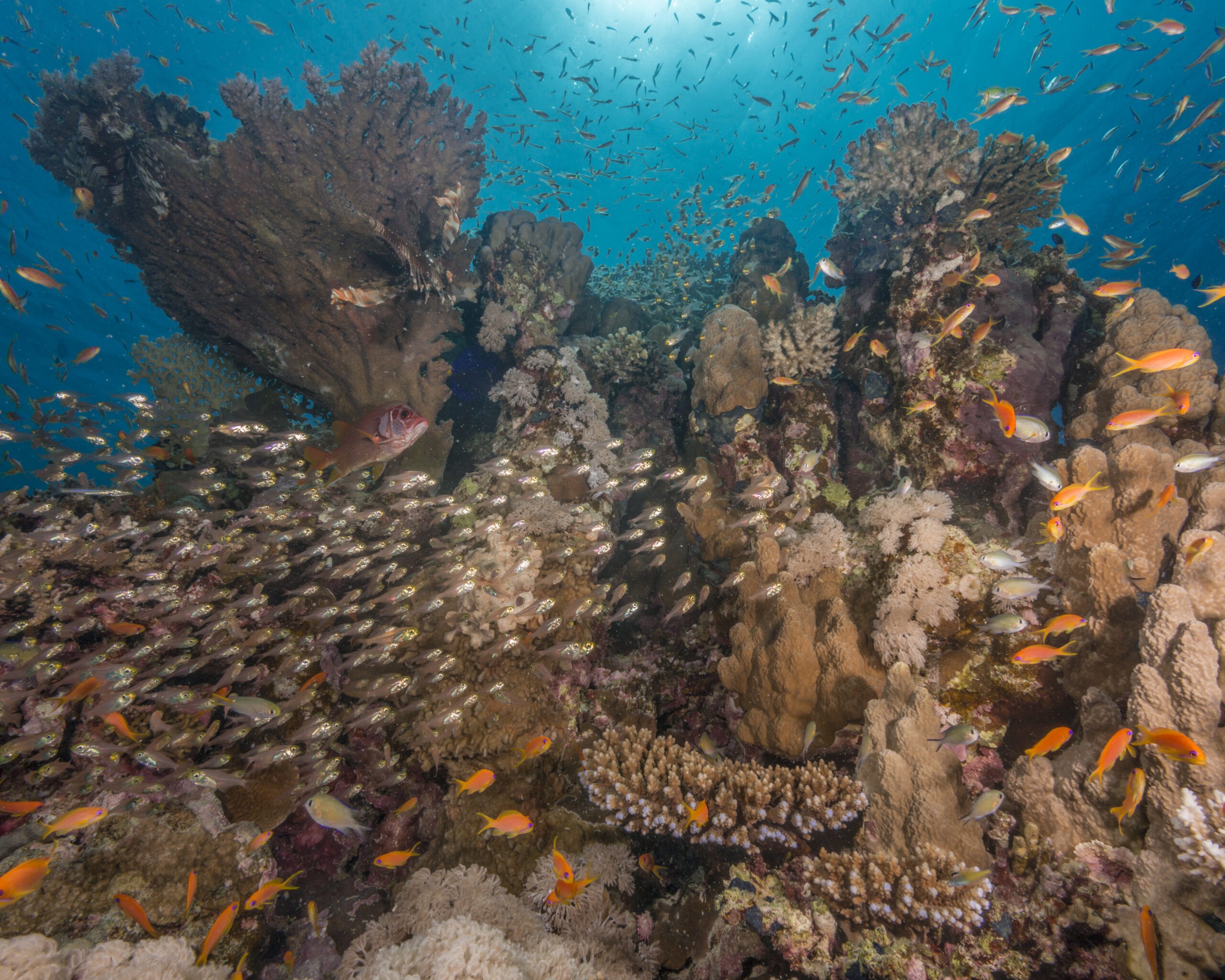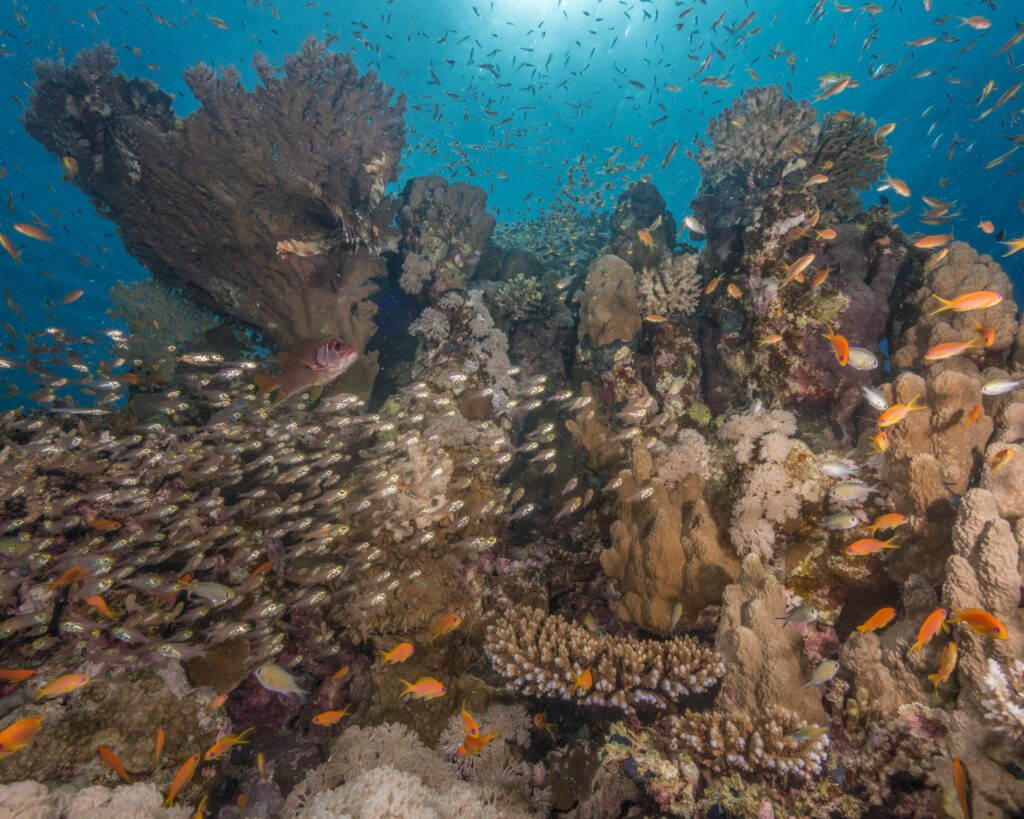
Coral reef scene in the Red Sea

Location & date
Emperor divers house reef at Palace and Sahara Sands Hotels, Marsa Alam, Egypt: 21st June 2014
Subject – Biodiversity of coral reefs
This image for me encapsulates the biodiversity of coral reefs in one picture. It is probably the most species I have ever crammed into one shot, and I would defy anyone to photograph more in any other environment than coral reefs. Below I have tried to identify most of them, but these are just the visible species. Many species of invertebrates and fish live within the crevices. The same scene photographed at night would look very different with invertebrates such as urchins, starfish, sea cucumbers, feather stars and crustaceans coming out to feed. Also fish such as parrot fish go to the reef to sleep in a cocoon. Even turtles might be present too.
Species in this photograph include:
Coralline red algae:
Sporolithon sp. (many similar species)
Sponges:
Various species including honeycomb sponge Crella cyathophora
Fire coral:
Millepora dichotoma
Soft corals:
Xenia umbellata
Anthelia glauca
Hard corals:
Porites sp.
Acropora sp. (multiple)
Coscinaraea monile
Fishes:
Longjawed squirrelfish Sargocentron spiniferum
Common lionfish Pterois miles
Juvenile barracuda Sphyraena sp.
Lyretail anthias Pseudanthias squamipinnis
Golden sweeper Parapriacanthus ransonneti
Arabian chromis Chromis flavaxilla
Various juvenile fish
About this image
This photograph was taken as part of my project on coral reefs. The location was a very busy house reef near Marsa Alam. Although it looks like a typical coral reef scene, views like this are sadly relatively rare. The section of reef in this photograph was the top of a small pinnacle, which serves as a nursery for small fish. There are also two lion fish against the table coral on the left. These are highly efficient ambush predators. Although it seems odd to see a top predator right in the midst of a nursery ground for some of its prey species, this can often happen on coral reefs.
Camera setup
Nikon D800, 16-35mm Nikon lens @16mm in a Nauticam NA-D800 housing with two Inon Z240 strobes
ISO 100, f/22, 1/125 sec
More like this:
Underwater photography section of this website, including a subsection on Coral reefs.
